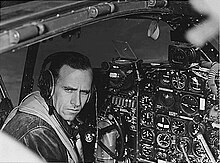
Back قصف كوريا الشمالية Arabic Bombardement de la Corée du Nord French Bombardamenti sulla Corea del Nord Italian 북한 폭격 Korean 轟炸北韓行動 Chinese


Air forces of the United Nations Command carried out an extensive bombing campaign against North Korea from 1950 to 1953 during the Korean War. It was the first major bombing campaign for the United States Air Force (USAF) since its inception in 1947 from the United States Army Air Forces. During the campaign, conventional weapons such as explosives, incendiary bombs, and napalm destroyed nearly all of the country's cities and towns, including an estimated 85% of its buildings.[1]
A total of 635,000 tons of bombs, including 32,557 tons of napalm, were dropped on Korea.[2] By comparison, the U.S. dropped 1.6 million tons in the European theater and 500,000 tons in the Pacific theater during all of World War II (including 160,000 on Japan). North Korea ranks alongside Cambodia (500,000 tons), Laos (2 million tons), and South Vietnam (4 million tons) as among the most heavily-bombed countries in history.[3]
- ^ Harden (2017), p. 9
- ^ Cite error: The named reference
Armstrong 2010was invoked but never defined (see the help page). - ^ Kiernan, Ben; Owen, Taylor (27 April 2015). "Making More Enemies than We Kill? Calculating U.S. Bomb Tonnages Dropped on Laos and Cambodia, and Weighing Their Implications". The Asia-Pacific Journal. 13 (17). Retrieved 30 August 2019.
© MMXXIII Rich X Search. We shall prevail. All rights reserved. Rich X Search